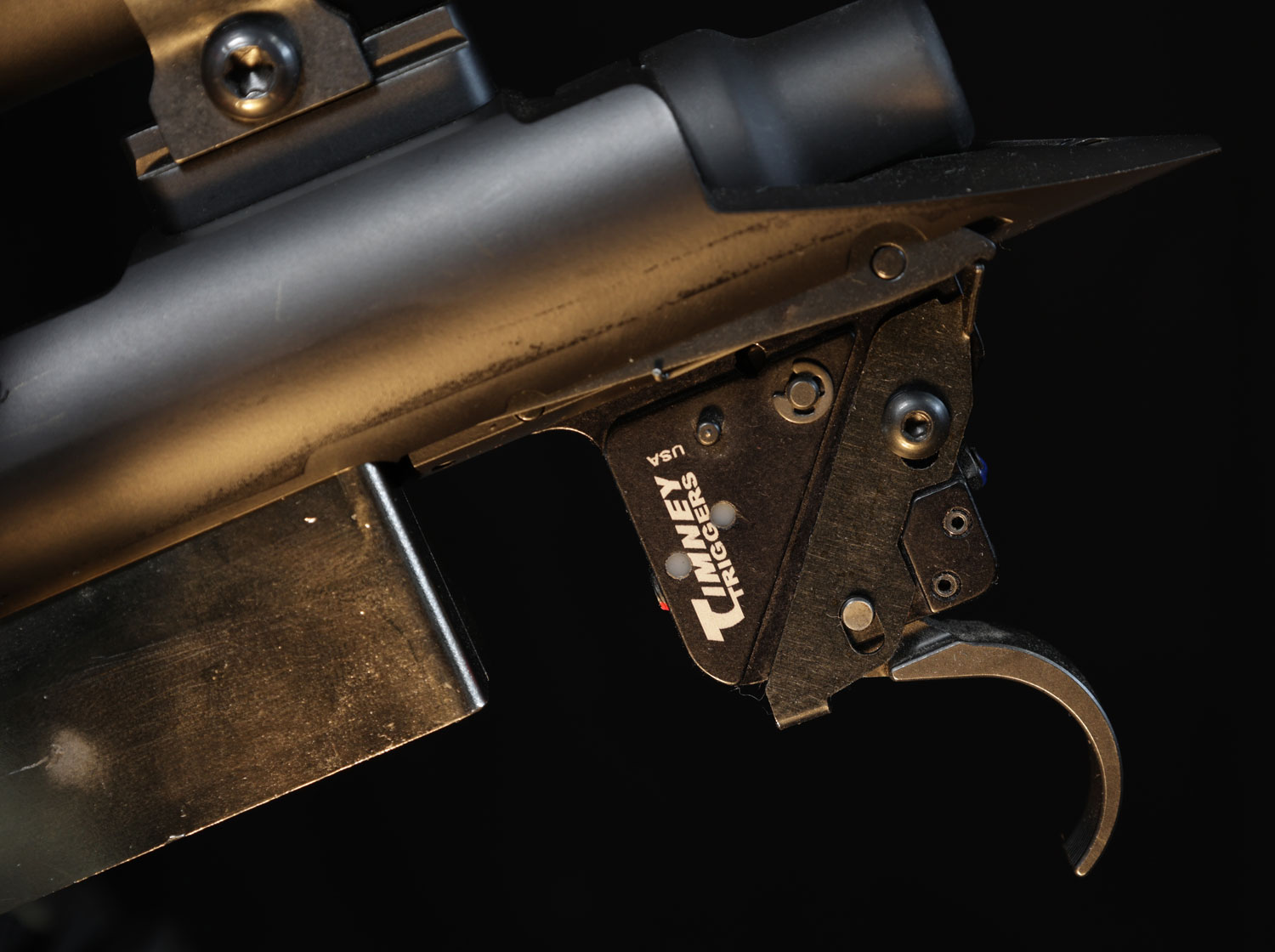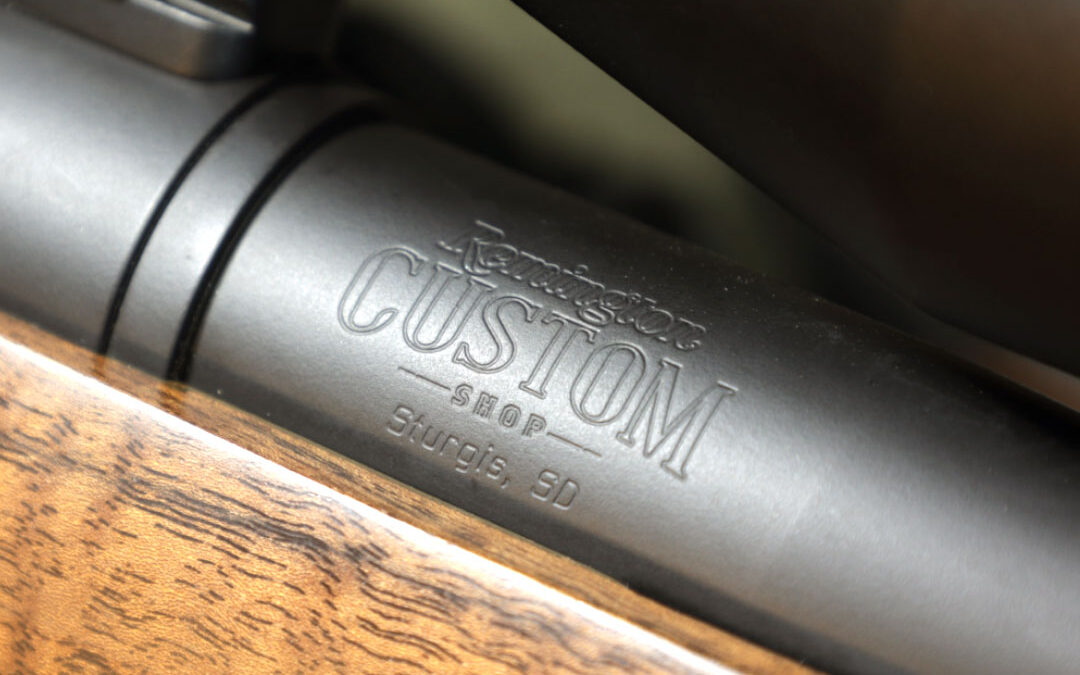Remington Custom Shop manager Carlos Martinez and I put our heads together in an attempt to buck the trend, to create something different, functional, beautiful. Personal.

The rifle you see here is the result. Notice the stock is not hand-laid carbon or even fiberglass-Kevlar. The barrel isn’t 26-inches long, coated with a six-tone camouflage pattern, twisted with double helix fluting or adorned with a 2-inch diameter suppressor. There is no 10-shot detachable magazine hanging five inches below the belly with an oversized quick-release lever. Not even a Picatinny rail extending from the back receiver ring forward to halfway down the barrel.
Weird, isn’t it?
I ordered this Remington Custom 40X Titanium in 260 Remington for the Texas aoudad hunt detailed in a 2021 issue of Sporting Classics. Martinez and I “tricked it out” in order to highlight a fine cartridge suffering unjustly under the onslaught of the 6.5 Creedmoor. The 260 Remington, another of the successful 308 Winchester descendants, bests Creedmoor velocities by about 100 fps. It is a true short-action round. Chamber it in a fast-twist barrel (1:8 inches) as we did, and it stabilizes the same long, high B.C. bullets as the Creedmoor, the 6.5 PRC and the 6.5-284 Norma. It’s a Remington round. Why not showcase it in a Remington action?
My second objective was to highlight the fine craftsmanship of the custom builders at the Remington Custom Shop where machinists and woodworkers such as Jesse Kaufmann, since moved on to his own custom engraving business, also build those stunning Dakota rifles and, in recent years, Marlin 1895 lever-actions. Rifle aficionados drool over high-end old Winchesters, Griffin & Howe Mausers, Rigbys, Holland & Hollands. Yet we tend to ignore the superb work done by today’s major manufacturers’ custom shops—not to mention dozens of custom gun makers. Certainly the trend toward tactical function and high-tech materials biases tastes away from classic forms and materials. All the more reason to advocate them.

With this Remington I wanted a rifle that reflected the pragmatic needs of a typical American deer hunter, someone who might poke about the forests and farm fields of the heartland, follow a track through the snow of the Upper Peninsula, maybe pull up a log and watch a swamp edge in Carolina. A hunter more likely to take a shot at 100 to 300 yards than memorize wind deflection and drops out to 1,500. And, perhaps, reach West to consummate a long-range relationship with a pronghorn, mule deer…or immigrant aoudad. In other words, middle-of-the-road. Balanced. Not too long, too heavy, too short, too light, too powerful, too weak. Goldilocks.
Finally, I wanted a rich, classy, but not pretentious look at reasonable weight. Highly figured walnut is never insubstantial, so we would have to shave ounces elsewhere. Martinez suggested a 20-inch barrel mated to an old titanium action he’d squirreled away on a back shelf. I eagerly bit on the titanium, but compromised on the barrel, adding an inch so as not to sacrifice too much velocity potential. The 44-grains of IMR 4831 powder held beneath a 140-grain bullet atop a 260 Remington cartridge should find plenty of space for a complete burn within a 21-inch .26-bore. Or nearly so. The 120-grain TTSX Barnes Vor-TX factory loads I’ve been shooting average 2,886 fps and huddle inside 3/4 MOA. The short barrel shaves a couple of ounces. More significantly, it increases handling efficiency in brush and woods where a rifle chambered in 260 Remington really shines.
Martinez suggested fluting on the barrel and bolt body for further weight reduction. I agreed for pragmatic reasons. But nothing gaudy. No spirals. Well, okay, spiral fluting on the bolt body. That seems reasonable for more effective self cleaning. I must confess, however, that during my past four decades of hunting everywhere from Arctic to deserts in temperatures as disparate as -30 F and +100 F in conditions from deluge to drought, no bolt action rifle in my hands has failed to cycle due to dust, dirt, debris or ice. But why tempt fate? The bolt is spiraled, shaving another ounce, perhaps. The finished rifle scales 7 pounds, 8 ounces.

The Custom Shop in Sturgis selected a blank with nicely contrasting, longitudinal mineral streaking overlain with lots of fiddleback, the kind that flashes in the light, appearing and disappearing like a hologram. They carved this lumber into a rising Monte Carlo comb and raised cheekpiece, capped the forend and grip with rosewood and filed some impressively fine checking within a fleur-de-lis pattern wrapping over the grip and under the belly. The stock mates to the action via twin pillars plus an epoxy bed. The barrel floats. A Timney trigger breaking smartly at 2.5 pounds lights the fireworks.

As the photos show, this Remington is currently wearing a Sig Sauer Sierra3 BDX 4.5-14×44 scope in Talley rings. This BDX system works via bluetooth in conjunction with a matching BDX laser rangefinder. You enter ballistic data matching your load. When the laser measures distance to target, it sends a signal to the scope that illuminates the aiming point along the vertical reticle. No counting stadia lines. No dialing turrets. Put the glowing dot on target and hit it. Dead simple. Deadly effective. Maybe too easy.
I recognize this as a superior system for easy precision targeting, but can’t help feeling I’m cheating. I’ve employed the system to send four .264-inch bullets toward four big game animals, killing each with one shot. Distances varied from 180 to 545 yards. The system is marvelously effective and can prevent guess and by golly missing and wounding, but is it a bridge too far?
I’ll save my ruminations on that for a future column. What I will note here is that, regardless its performance, this scope is a bit overpowering for this rifle. It and the Talley steel rings add 1.4 pounds to overall weight. In keeping with a short, handy roaming rifle, a shorter, narrower, lighter scope seems more appropriate.
Call me an old Fudd (like many in the tactical crowd do,) but with Martinez’s help and the stellar craftsmanship of the Remington Custom Shop artisans, I think we’ve put together an imminently practical, beautiful, deadly accurate rifle for real hunting in the classic North American tradition.

